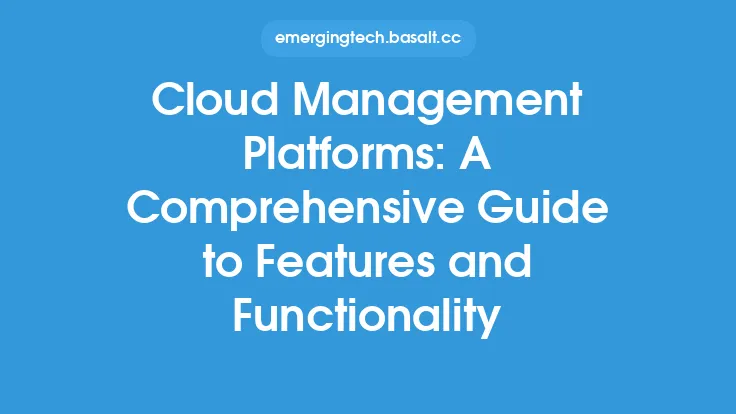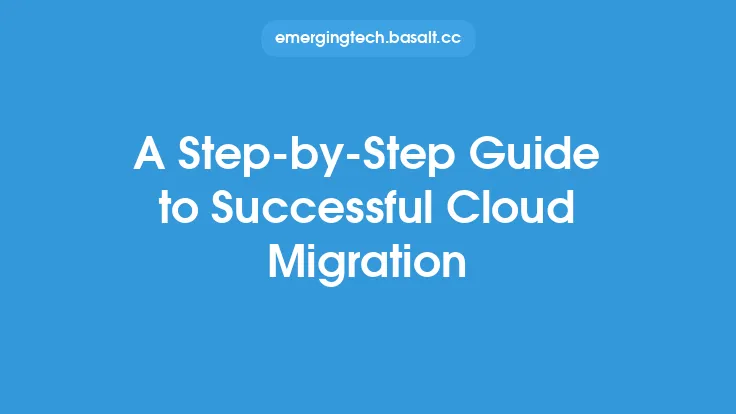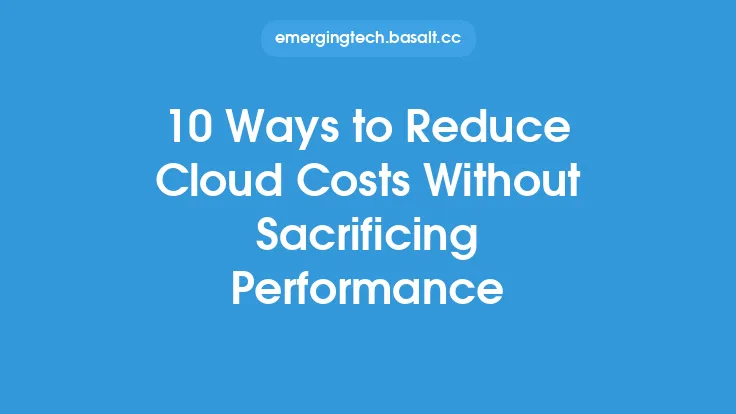Cloud computing has revolutionized the way businesses operate, providing unparalleled scalability, flexibility, and cost savings. However, as organizations continue to migrate their workloads to the cloud, managing cloud costs has become a significant challenge. Cloud cost optimization is the process of identifying and implementing strategies to reduce cloud expenses while maintaining or improving performance. In this article, we will delve into the world of cloud cost optimization, exploring the fundamental principles, strategies, and best practices that can help organizations achieve significant cost savings without compromising on performance.
Introduction to Cloud Cost Optimization
Cloud cost optimization is a critical aspect of cloud computing, as it enables organizations to maximize their return on investment (ROI) while minimizing waste and inefficiency. The cloud cost optimization process involves analyzing an organization's cloud usage, identifying areas of inefficiency, and implementing strategies to optimize resource utilization, reduce waste, and lower costs. Effective cloud cost optimization requires a deep understanding of cloud pricing models, resource utilization patterns, and the organization's specific needs and requirements.
Understanding Cloud Pricing Models
Cloud pricing models are complex and can vary significantly between cloud providers. The most common pricing models include pay-as-you-go, reserved instances, spot instances, and subscription-based models. Pay-as-you-go pricing models charge customers based on their actual usage, while reserved instances provide a discounted rate for committed usage. Spot instances, on the other hand, offer a discounted rate for unused capacity, but can be interrupted at any time. Subscription-based models provide a fixed rate for a specified period, regardless of usage. Understanding these pricing models is essential for effective cloud cost optimization, as it enables organizations to choose the most cost-effective model for their specific needs.
Identifying Areas of Inefficiency
Identifying areas of inefficiency is a critical step in the cloud cost optimization process. This involves analyzing an organization's cloud usage patterns, identifying unused or underutilized resources, and detecting opportunities for optimization. Common areas of inefficiency include overprovisioning, underutilization, and inefficient resource allocation. Overprovisioning occurs when resources are allocated in excess of actual requirements, resulting in unnecessary costs. Underutilization, on the other hand, occurs when resources are not fully utilized, resulting in wasted capacity. Inefficient resource allocation can also lead to significant cost inefficiencies, as resources may not be optimized for specific workloads or applications.
Cloud Cost Optimization Strategies
There are several cloud cost optimization strategies that organizations can implement to reduce costs and improve efficiency. These include right-sizing resources, using automated scaling and scheduling, implementing reserved instances and spot instances, and optimizing storage and database costs. Right-sizing resources involves allocating resources based on actual requirements, rather than overprovisioning or underutilizing them. Automated scaling and scheduling enable organizations to dynamically adjust resource allocation based on changing workload demands. Reserved instances and spot instances can provide significant cost savings for committed and flexible workloads, respectively. Optimizing storage and database costs involves selecting the most cost-effective storage and database options for specific workloads and applications.
Best Practices for Cloud Cost Optimization
Effective cloud cost optimization requires a combination of technical expertise, business acumen, and best practices. Some best practices for cloud cost optimization include monitoring and analyzing cloud usage, implementing cost governance and accountability, and continuously optimizing and refining cloud resources. Monitoring and analyzing cloud usage enables organizations to identify areas of inefficiency and optimize resource allocation. Implementing cost governance and accountability ensures that cloud costs are transparent, accountable, and aligned with business objectives. Continuously optimizing and refining cloud resources enables organizations to stay ahead of changing workload demands and cloud pricing models.
Cloud Cost Optimization Tools and Technologies
There are several cloud cost optimization tools and technologies that can help organizations optimize their cloud costs. These include cloud cost monitoring and analytics tools, cloud management platforms, and automation and orchestration tools. Cloud cost monitoring and analytics tools provide real-time visibility into cloud usage and costs, enabling organizations to identify areas of inefficiency and optimize resource allocation. Cloud management platforms provide a centralized platform for managing cloud resources, including provisioning, scaling, and optimizing resources. Automation and orchestration tools enable organizations to automate cloud resource management, including scaling, scheduling, and optimizing resources.
Conclusion
Cloud cost optimization is a critical aspect of cloud computing, enabling organizations to maximize their ROI while minimizing waste and inefficiency. By understanding cloud pricing models, identifying areas of inefficiency, and implementing cloud cost optimization strategies, organizations can achieve significant cost savings without compromising on performance. Effective cloud cost optimization requires a combination of technical expertise, business acumen, and best practices, including monitoring and analyzing cloud usage, implementing cost governance and accountability, and continuously optimizing and refining cloud resources. By leveraging cloud cost optimization tools and technologies, organizations can streamline their cloud resource management, reduce costs, and improve efficiency, ultimately achieving a more agile, flexible, and cost-effective cloud infrastructure.





